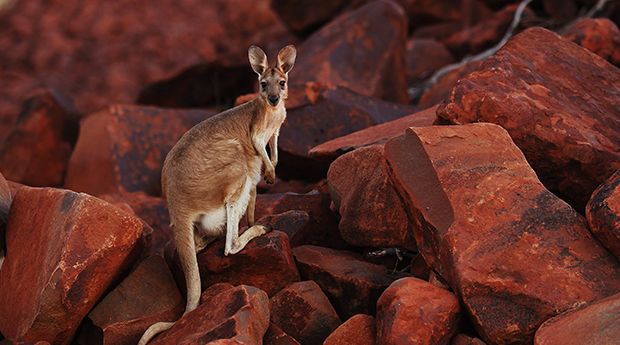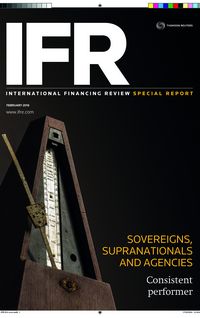While a waning Asian bid has dampened appetite for Australian dollar paper, its neighbour across the Tasman Sea is picking up some of the slack.
Kangaroo bond sales from sovereign, supranational and agency issuers have never fully recovered from the asset class’s 2011 exclusion from the Australian Prudential Regulatory Authority’s list of eligible assets to meet short-term liquidity coverage ratios under Basel III regulations.
The Liquidity Coverage Ratio, formally introduced on January 1 2015, obliges banks to hold more HQLAs, namely Commonwealth and semi-government bonds, at the expense of higher yielding alternatives, including SSA Kangaroos, that are less liquid.
APRA’s establishment of the LCR imposed dampening domestic bank balance-sheet demand for Kangaroo paper, particularly impacting on the three-year and four-year segment they dominated.
Local fund managers picked up some of the slack but Australian real money’s equity bias holds back efforts to establish Australia as a key second tier destination for overseas credits alongside the sterling, Swiss franc, Canadian and Singapore dollar bond markets.
Australia enjoys the world’s fourth biggest pension pool at US$1.7trn, according to Towers Watson, but only 15% of these assets were allocated to bonds in 2014, less than half the global average of 31%.
With domestic retail investors maintaining a clear tax-break-related, preference for equity funds and term deposits, the Kangaroo market has instead looked offshore to create growth.
Asian banks, central banks and official institutions have obliged, drawn to the relatively high yields and diversity on offer in Australia, away from local markets, where property, resource and bank credits tend to dominate.
The reduced local bank bid caused SSAs to shift more towards five-year offerings, which typically target central banks looking for a pick-up over sovereign and state government bonds, as well as 10-year Kangaroos to tap elevated demand from Japanese investors.
Japan’s life insurance companies in particular had been on the lookout for higher yielding Triple A long-term Australian dollar bonds to hedge their daily inflows from the sale of Australian dollar life insurance policies.
However, offshore interest began to wane late last year, contributing to the 20% drop in SSA Kangaroo issuance in 2015, to A$20.8bn from A$26bn in 2014.
The weak global backdrop in the second half of 2015, lower absolute and relative rates in Australia, the Aussie dollar’s weakening trend through 2015 and the compression in the Australia/US cross-currency basis swap all weighed on the overall market.
Annual Australian dollar bond supply declined in 2015, from 2014’s post-Lehman high of A$143bn to A$130.9bn, but the proportional reduction in SSA Kangaroos was deeper, with the asset class’ overall market share Down Under slipping to 15.9% from 18.2%.
Japanese investors sold a net A$95m of non-sovereign Australian dollar debt in November 2015, having been net buyers in 24 of the previous 26 months, according to Westpac Research.
Their reduced interest is underlined by reduced 10-year area SSA Kangaroo sales in January 2016, to A$780m versus A$2.2bn in the same month in 2015.
Japanese investors instead turned their attention to non-Australian foreign assets, with the US the main beneficiary but Europe also gaining, Westpac noted.
Rod Everitt, manager director, syndicate at Deutsche Bank, confirmed the reduced Asian bid relative to the 2013, 2014 and early 2015 levels, with the start of 2016 representing a continuation of the generally cautious market conditions seen in the second half of 2015.
“Investors are engaged and have cash to put to work but they are not spending as much as they had done previously. The view of Australia as a proxy for Chinese/Asian risk may also be dampening demand, particularly among those investors that believe the Australian dollar has further to fall,” he said.
Australia’s role as a China proxy contributed to a 25% plus decline in the Aussie/US dollar exchange between the beginning of September 2014 and the end of January 2016.
Many analysts, including the RBS credit research team, see further pain ahead for the “Lucky Country” as the Chinese slowdown deepens.
RBS analysts noted: “Over the past two decades, Australia’s economy grew as a satellite of China. One-third of its exports are to China, and capital flows from China have contributed to Australia’s housing overvaluation. Credit markets are still pricing a safe scenario, unlike foreign exchange and rates. We think this will change.”
Kauri market deepens
While the Kangaroo market has slowed, SSA sales in New Zealand reached new heights, with 2014 and 2015 being, by some distance, the two busiest years in history.
The issuance of Kauri bonds, the nickname for local Kiwi dollar offerings from foreign issuers, totalled NZ$6.3bn last year, just NZ$25m short of 2014’s annual record and well above the previous peak of NZ$5.5bn set in 2007 prior to the global financial crisis. From 2009 to 2012 whole-year totals ranged between NZ$1.4bn and NZ$2.3bn.
Glen Sorensen, syndication manager at ANZ Bank New Zealand, the clear market leader for arranging Kauri trades, puts the growth of the market down to a steady increase in demand from offshore investors, especially Asian central banks and official institutions. Overseas investors now take up around half of a typical Kauri bond, according to Sorensen, up from approximately 30% three or four years ago.
In addition to an elevated Asian bid, Western investor demand has also picked up significantly. The Americas and Europe bought a combined 31% of the World Bank’s new five-year benchmark issued in January 2016, up from their 9% allocation in the corresponding transaction a year earlier.
“Investors’ desire to diversify away from core currencies had already boosted the Kangaroo market, so it was perhaps natural that this demand extended across the Tasman Sea into New Zealand,” Sorensen said.
New Zealand has also benefited from having higher outright yields than other developed countries, including Australia. For example, the yield on five-year New Zealand government bonds was 3.03% at the end of 2015, 72bp more than Australia’s 2.31% equivalent, while US, UK and Canadian five-year sovereign paper was paying 1.77%, 1.35% and 0.73%, respectively.
Among regional peers, Singapore, Hong Kong and Japanese five-year government yields were quoted at 1.90%, 1.11% and just 0.04%, respectively.
As far as the domestic bid is concerned, bank balance sheets traditionally represent the largest domestic investor set for Triple A rated Kauri paper, which has been repo-eligible since July 2007. However, Sorensen notes that real money interest has been broadening, partly in response to new offerings beyond the traditional five-year tenor.
On the supply side, in addition to larger and more frequent deals from a small pool of SSA regulars, the Kauri market has enjoyed a welcome broadening of issuers over the year or so.
Inter-American Development Bank made its first visit since 2009 in January 2016, following on from 2015’s well-received debuts by German agencies KfW and Landeskreditbank Baden-Wuerttemberg-Foerderbank, or L-Bank
Before then, the Kauri market had been dominated by seven SSAs – International Bank for Reconstruction and Development, Nordic Investment Bank, International Financial Corp, Asian Development Bank, Rentenbank, Kommunalbanken and Export Development Bank – since the global financial crisis.
Although some argue that an upturn in net sovereign issuance may crowd out demand for Kauri paper, a New Zealand DCM manager has seen little evidence of this, pointing out that both markets, historically, have tended to grow at the same time.
The Kauri market has potential for further growth, given that the size of the Australian economy is only seven-and-a-half times that of New Zealand, whereas the Kangaroo bond market is 30 times bigger.
But New Zealand does have important constraints, including a much smaller savings pool relative to Australia.
To see the digital version of this special report, please click here
To purchase printed copies or a PDF of this report, please email gloria.balbastro@thomsonreuters.com



